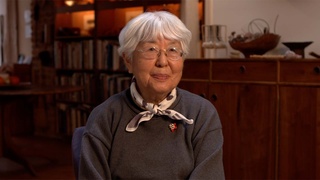Interviews
Art helped him to feel less foreign in school
I like art, so I was doing a lot of drawing and things like that, and the teachers found out I could draw pretty good and they would ask me to, if I could come to their house and paint picture on the wall for their kids on the weekend, and they'll feed me lunch and everything. I was doing that as a kid in grammar school.
Even in middle school, the grammar school that I went to, they remembered me and they asked whether I can go in their grammar school and do some painting for for the stage, you know. From junior high school to go to grammar school and do this, so they asked the teacher if they can do this, and they arranged it so I did that. I did a lot of things for high school, the teachers, my art teacher asked me to design a placemat for the Teacher's Association, they had a dinner party and I had to design a placemat for them, and things like that. I began to kind of fit in more, forget about being a foreigner as I went on my life.
Date: September 20, 2019
Location: California, US
Interviewer: Tom Ikeda and Yoko Nishimura
Contributed by: Watase Media Arts Center, Japanese American National Museum and Denshō: The Japanese American Legacy Project.
Explore More Videos


Conflicted about immigrating to America (Japanese)
(b. 1925) War bride

Defining "Nikkei"
(1941-2018) Japanese Canadian photojournalist and activist

Unique Identity from Having Multiple Backgrounds
(b. 1938) Philipines-born hikiagesha who later migrated to the United States.

Growing up Japanese in Hawaii
(b. 1952) Former banking executive, born in Hawaii



General reasons why people left Japan for Peru
Okinawan American whose parents are from Peru.

Parents identification as Peruvian Okinawan
Okinawan American whose parents are from Peru.

Okinawan cultural appreciation
Okinawan American whose parents are from Peru.

Prejudice against Okinawans from mainland folks
Okinawan American whose parents are from Peru.

American values she aligns with
Okinawan American whose parents are from Peru.

Working together in Okinawa using three languages
Okinawan American whose parents are from Peru.


